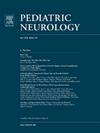x连锁智力残疾患者的临床和分子谱及不同基因的新变异
IF 3.2
3区 医学
Q2 CLINICAL NEUROLOGY
引用次数: 0
摘要
x连锁智力残疾(XLID)是一种临床和遗传异质性疾病。在这项研究中,我们旨在描述XLID患者的临床和分子谱。我们还评估了靶向基因面板在疑似XLID患者中的临床疗效。方法84例疑似XLID患者纳入研究。阵列比较基因组杂交、脆性X fragman分析和靶向XLID基因面板。结果24例XLID患者(男22例,女2例)经遗传学诊断。在4例患者中检测到不同的X染色体拷贝数变异,包括2个重复和2个缺失。15名患者患有脆性X综合征。在5例不相关的患者中检测到点突变。在RPS6KA3基因中检测到的变异之前由我们的团队报道过。在MID1基因中发现了一个新的双核苷酸缺失。此外,IL1RAPL1和ATRX基因中还发现了新的错义变异。在同一家族的另外5名受影响的男性患者中检测到IL1RAPL1变异。ATRX变异的患者出现大脑皮质厚回症和小脑蚓部发育不全。结论我们的发现拓宽了XLID患者的突变谱和临床表现。此外,这是在XLID患者中发现的第二例IL1RAPL1基因错义变异。我们还强调了逐步诊断算法的重要性,该算法结合了染色体微阵列分析、FMR1基因重复分析和XLID患者的下一代测序分析。本文章由计算机程序翻译,如有差异,请以英文原文为准。
The Clinical and Molecular Spectrum of Patients With X-Linked Intellectual Disability and Novel Variations in Different Genes
Background
X-linked intellectual disability (XLID) is a clinically and genetically heterogeneous disorder. In this study, we aimed to describe the clinical and molecular spectrum of patients with XLID. We also evaluated the clinical efficacy of a targeted gene panel in patients with suspected XLID.
Methods
Eighty-four patients with suspected XLID were enrolled in the study. Array comparative genomic hybridization, fragile X fragman analysis, and targeted XLID gene panel were performed.
Results
Genetic diagnosis was established in a total of 24 patients (22 male and two female) with XLID. Different copy number variations of the X chromosome were detected in four patients, including two duplications and two deletions. Fifteen patients had fragile X syndrome. Point mutations were detected in five unrelated patients. Variants detected in RPS6KA3 gene were previously reported by our team. A novel two-nucleotide deletion was shown in the MID1 gene. Additionally, novel missense variations were revealed in IL1RAPL1 and ATRX genes. The IL1RAPL1 variant was detected in additional five affected male patients in the same family. The patient, who had ATRX variation, had pachygyria in the cerebral cortex and hypoplasia of cerebellar vermis.
Conclusions
Our findings have broadened the spectrum of mutations and clinical manifestations of patients with XLID. Additionally, this represents the second reported missense variation in the IL1RAPL1 gene identified in patients with XLID. We also emphasized the importance of a stepwise diagnostic algorithm that incorporates chromosomal microarray analysis, FMR1 gene repeat analysis, and next-generation sequencing analysis for patients with XLID.
求助全文
通过发布文献求助,成功后即可免费获取论文全文。
去求助
来源期刊

Pediatric neurology
医学-临床神经学
CiteScore
4.80
自引率
2.60%
发文量
176
审稿时长
78 days
期刊介绍:
Pediatric Neurology publishes timely peer-reviewed clinical and research articles covering all aspects of the developing nervous system.
Pediatric Neurology features up-to-the-minute publication of the latest advances in the diagnosis, management, and treatment of pediatric neurologic disorders. The journal''s editor, E. Steve Roach, in conjunction with the team of Associate Editors, heads an internationally recognized editorial board, ensuring the most authoritative and extensive coverage of the field. Among the topics covered are: epilepsy, mitochondrial diseases, congenital malformations, chromosomopathies, peripheral neuropathies, perinatal and childhood stroke, cerebral palsy, as well as other diseases affecting the developing nervous system.
 求助内容:
求助内容: 应助结果提醒方式:
应助结果提醒方式:


